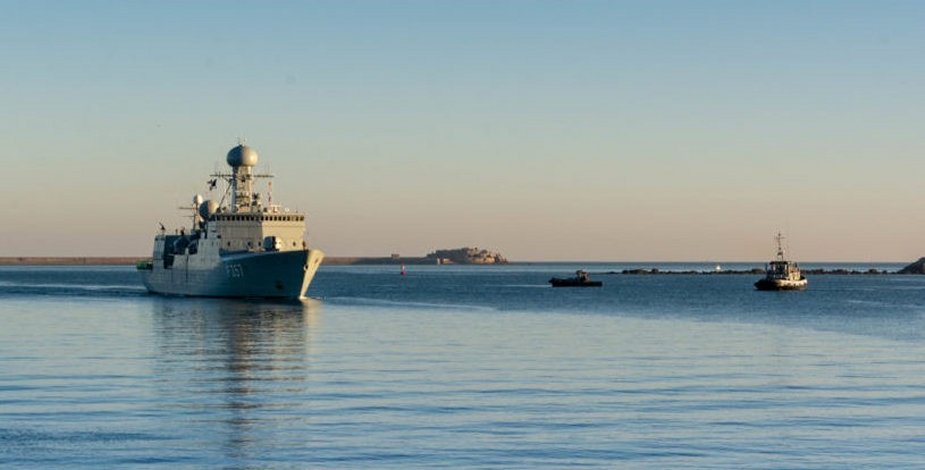Both World War I and World War II left plenty of various bombs and mines in the Channel and in the North Sea. During three weeks, NATO's MCM vessels will be deployed in these areas, trying to find, identify and neutralise those remaining threats.
 Danish frigate HDMS Thetis coming to port in Cherbourg (Picture source : NATO / Brian Djurslev)
Danish frigate HDMS Thetis coming to port in Cherbourg (Picture source : NATO / Brian Djurslev)
Actually, four vessels from the Standing NATO Mine Countermeasures Group One (which is one of the two groups of the NATO Mine Countermeasures' force). As part of this group, we can find the Danish frigate HDMS Thetis, the German minehunters FGS Dillingen and FGS Homburg, and the Belgian minehunter Bellis. From January 18 to March 7, the first Group will explore a wide area between Dieppe and Le Tréport. During this operation, the NATO Group will be joined by the French minehunter Andromède.
Twice a year, since 1996, this NATO Mine Countermeasures Group comes to the Channel and the North Sea, as part of the "Historical Ordnance Disposal" programme. The aim of this mission is to detect, identify, and neutralise all the ammunition dating from the World Wars. During such operations, approximatively 10 munitions are neutralised (up to 2,4 tons of explosive).










